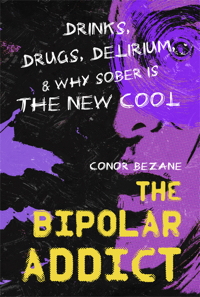 Suicide is becoming rampant — and not just among celebrities, such as Robin Williams, Chris Cornell, Chester Bennington, Scott Hutchison, and most recently, Kate Spade and Anthony Bourdain, but among the entire population.
Suicide is becoming rampant — and not just among celebrities, such as Robin Williams, Chris Cornell, Chester Bennington, Scott Hutchison, and most recently, Kate Spade and Anthony Bourdain, but among the entire population.
According to a new study by the Center for Disease Control and Prevention, there were nearly 45,000 deaths by suicide in 2016.
In the study, the CDC examined suicide rates between the years of 1999 and 2016. Rates have risen 30 percent since 1999.
“Suicide in this country really is a problem that is impacted by so many factors,” Deborah Stone, author of the study and a behavioral scientist at the CDC, told NPR. “It’s not just a mental health concern. There are many different circumstances and factors that contribute to suicide.”
Published in the CDC’s Morbidity and Mortality Weekly Report, the study examines suicide rates state-by-state, with the biggest spike going to North Dakota, with an uptick of 57.6 percent. Forty-four states saw suicide rates rise since 1999.
Suicide is the 10th leading cause of death in America, according to the study.
Stone points out that mental health issues are not the only factors in the suicide epidemic. The study outlines that access to guns, poor coping skills, arguments and conflicts, economic and social troubles, job issues, eviction or homelessness, and physical health problems are also significant triggers for suicide.
Guns were the most common means of committing suicide, followed by hanging or suffocation, and poisoning.
“If you could make it harder to make that attempt by not having access to the means, often what happens is the feelings will pass,” Robert Gebbia of the American Foundation for Suicide Prevention told NPR. “It gives people time for someone to intervene and get them help, so that is a really important preventative step that can be done.”
The Alliance of Suicide Prevention and the American Foundation for Suicide Prevention have set a goal of reducing suicides in our country by 20 percent by 2025.
The CDC’s study found that only half of suicides were related to mental health.
Suicide is often an impulse decision. Gebbia tells NPR that the U.S. has no nationally funded suicide prevention program for adults, even though there are some small programs for youth. He says the problem will only grow unless there is monetary investment in prevention.
Meanwhile, nearly 45,000 of our loved ones continue to die from suicide with each passing year.
If you find yourself in crisis, please call the National Suicide Prevention Lifeline at 800-273-TALK (8255).







